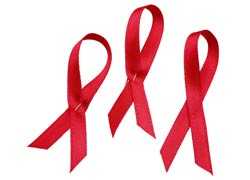HIV / AIDS
- HIV and Injection Drug Use
Sharing needles, syringes, and other injection equipment puts people who inject drugs (PWID) at high risk for getting HIV and other infections, including hepatitis.
11/29/2016 1:30:00 PM - Daily Pill Can Prevent HIV
Preexposure prophylaxis (PrEP) is a medicine taken daily that can be used to prevent getting HIV. PrEP is for people without HIV who are at very high risk for getting it from sex or injection drug use.
11/24/2015 12:01:00 PM - HIV Care Saves Lives
Viral suppression is key for people living with HIV. Viral suppression means having very low levels of HIV in the body, even though the virus is still there. Achieving viral suppression by taking HIV medicines allows people living with HIV to have nearly normal lifespans and greatly reduces their chances of transmitting the virus.
11/25/2014 12:00:00 PM - HIV Among Youth in the US
About 50,000 people are infected with HIV each year, and 1 in 4 is 13 to 24 years old. Youth make up 7% of the more than 1 million people in the US living with HIV. About 12,000 youth were infected with HIV in 2010. The greatest number of infections occurred among gay and bisexual youth. Nearly half of all new infections among youth occur in African American males.
11/27/2012 1:00:00 PM - New Hope for Stopping HIV
Too many people don't know they have HIV (human immunodeficiency virus). About 1.2 million people are living with HIV in the US but about 240,000 don't know they are infected. Each year, about 50,000 people get infected with HIV in the US. Getting an HIV test is the first step to finding out if you have HIV and getting medical care. Without medical care, HIV leads to AIDS (acquired immunodeficiency syndrome) and early death.
11/29/2011 12:00:00 PM - HIV Testing in the US (PDF)
HIV (human immunodeficiency virus) is a serious infection that, without treatment, leads to AIDS (acquired immunodeficiency syndrome) and early death. An estimated 1.1 million people are living with HIV in the US and as many as 1 in 5 don't know they are infected.
12/7/2010 12:00:00 PM
- Page last reviewed: November 24, 2015
- Page last updated: November 24, 2015
- Content source:
- Office of the Associate Director for Communications (OADC)
- Page maintained by: Office of the Associate Director for Communications (OADC)


 ShareCompartir
ShareCompartir





